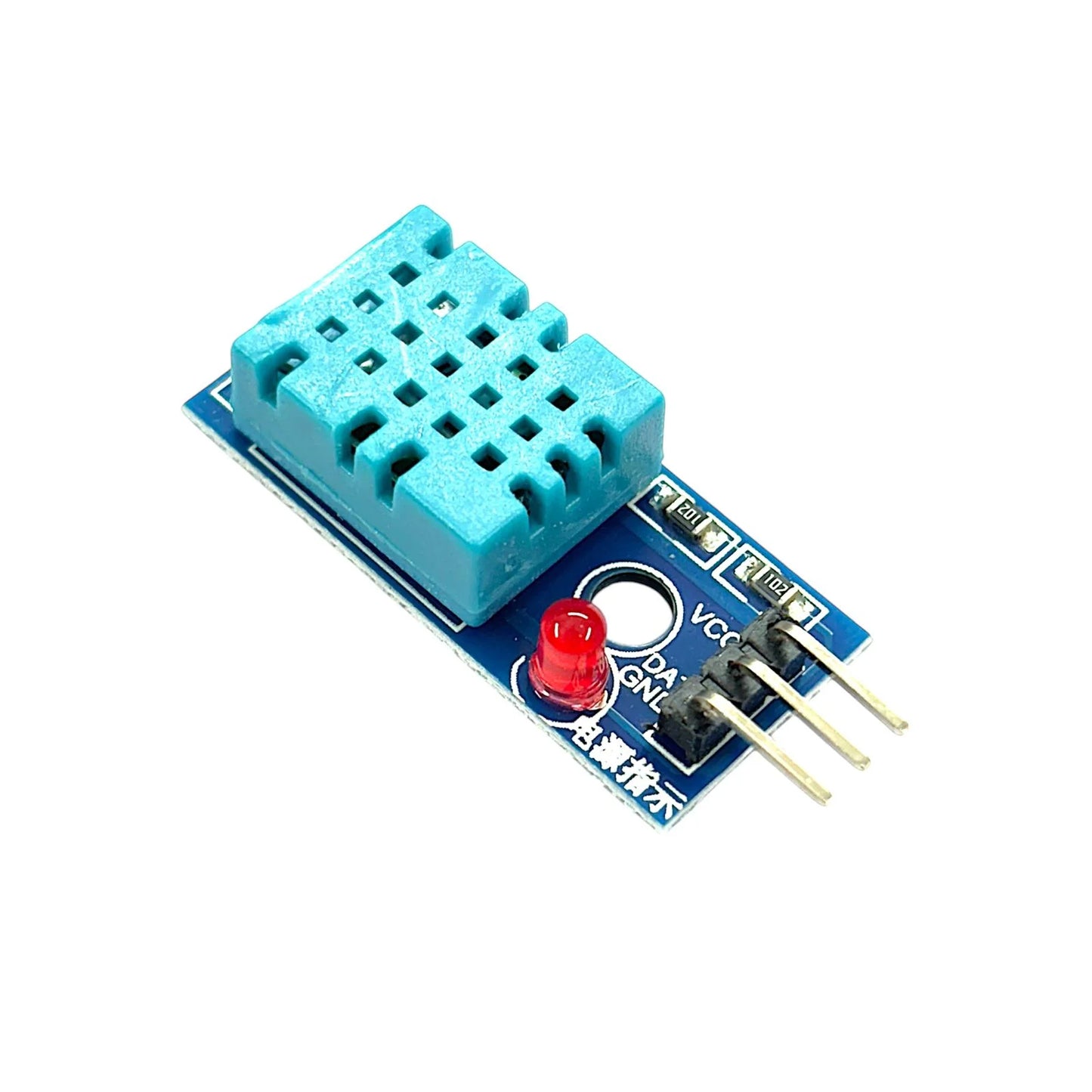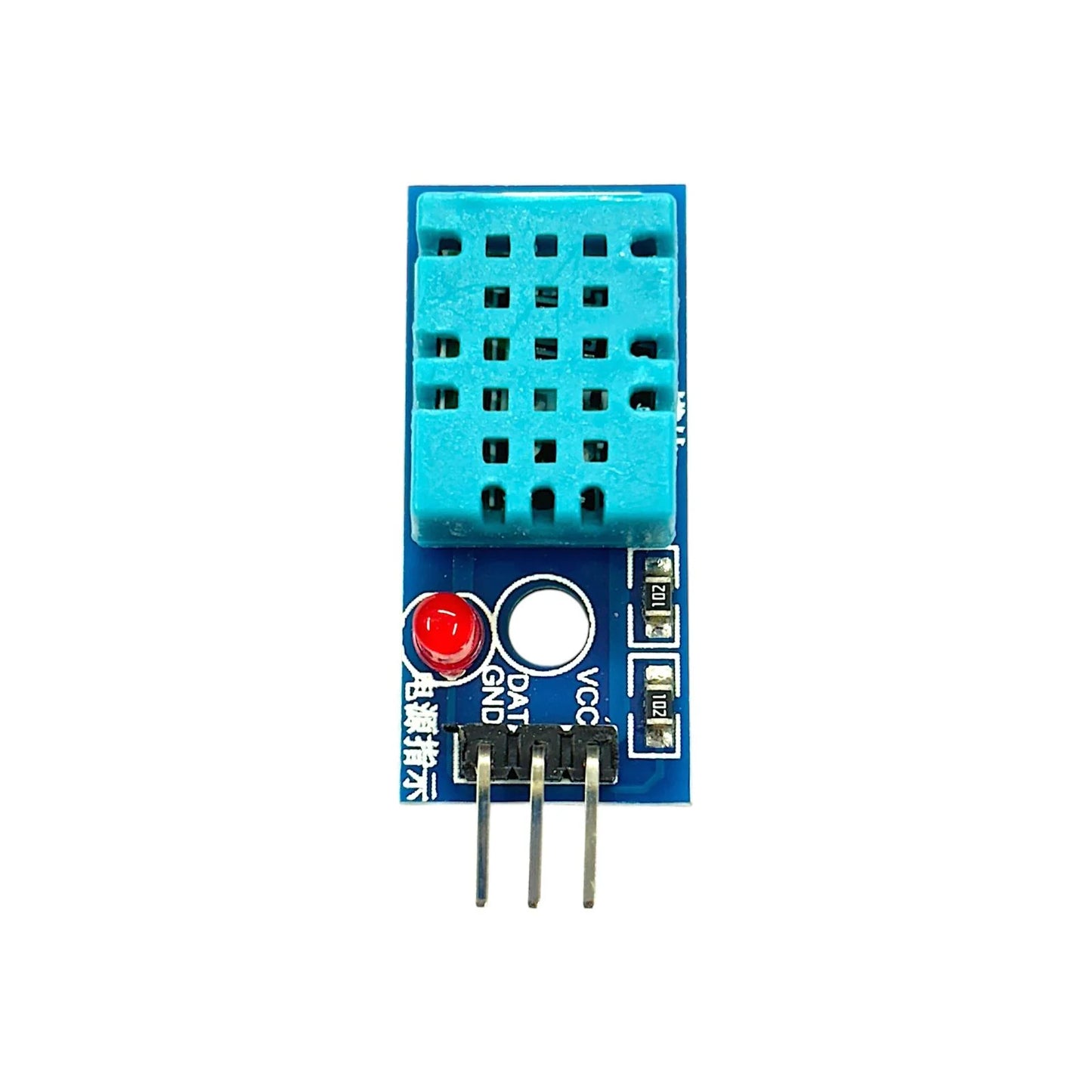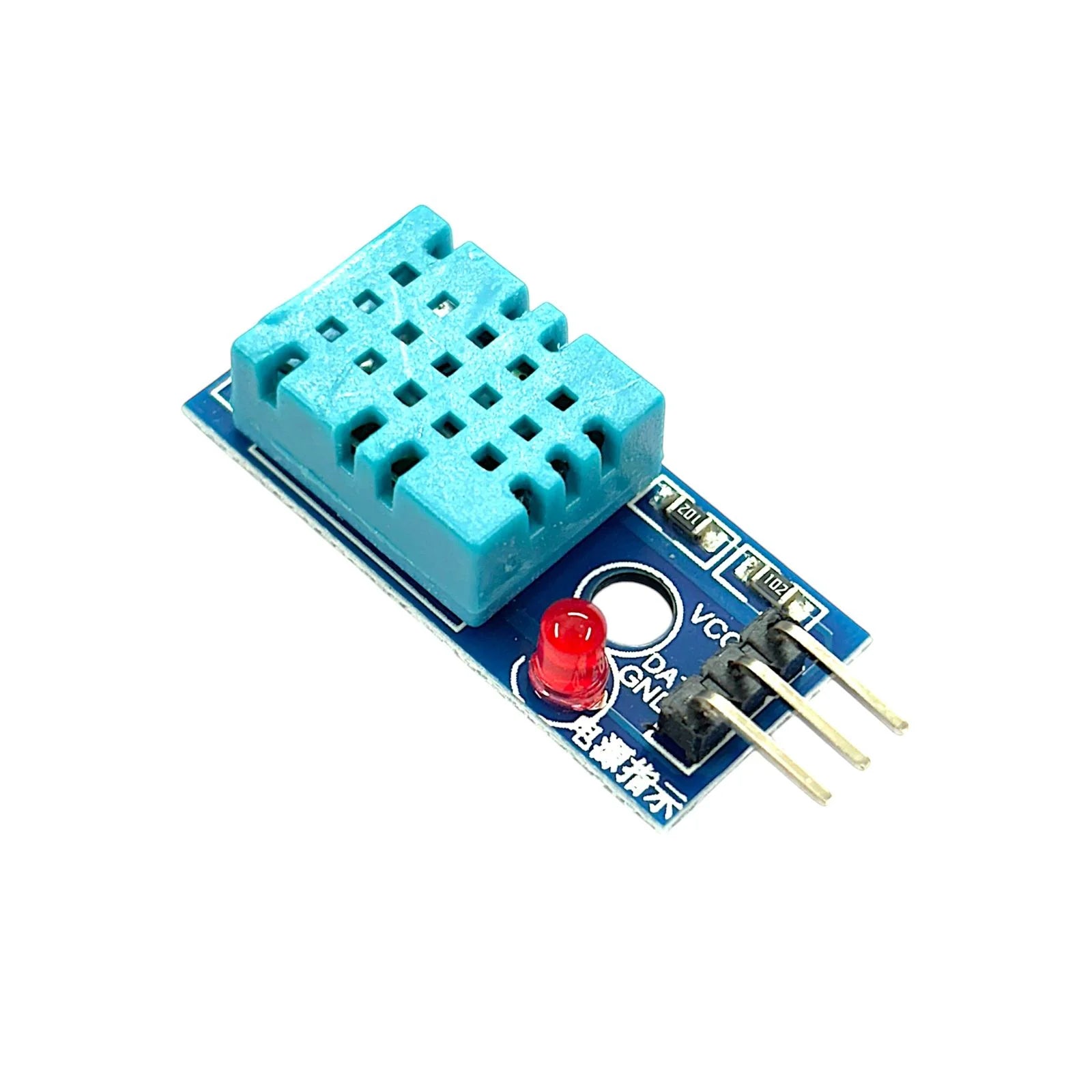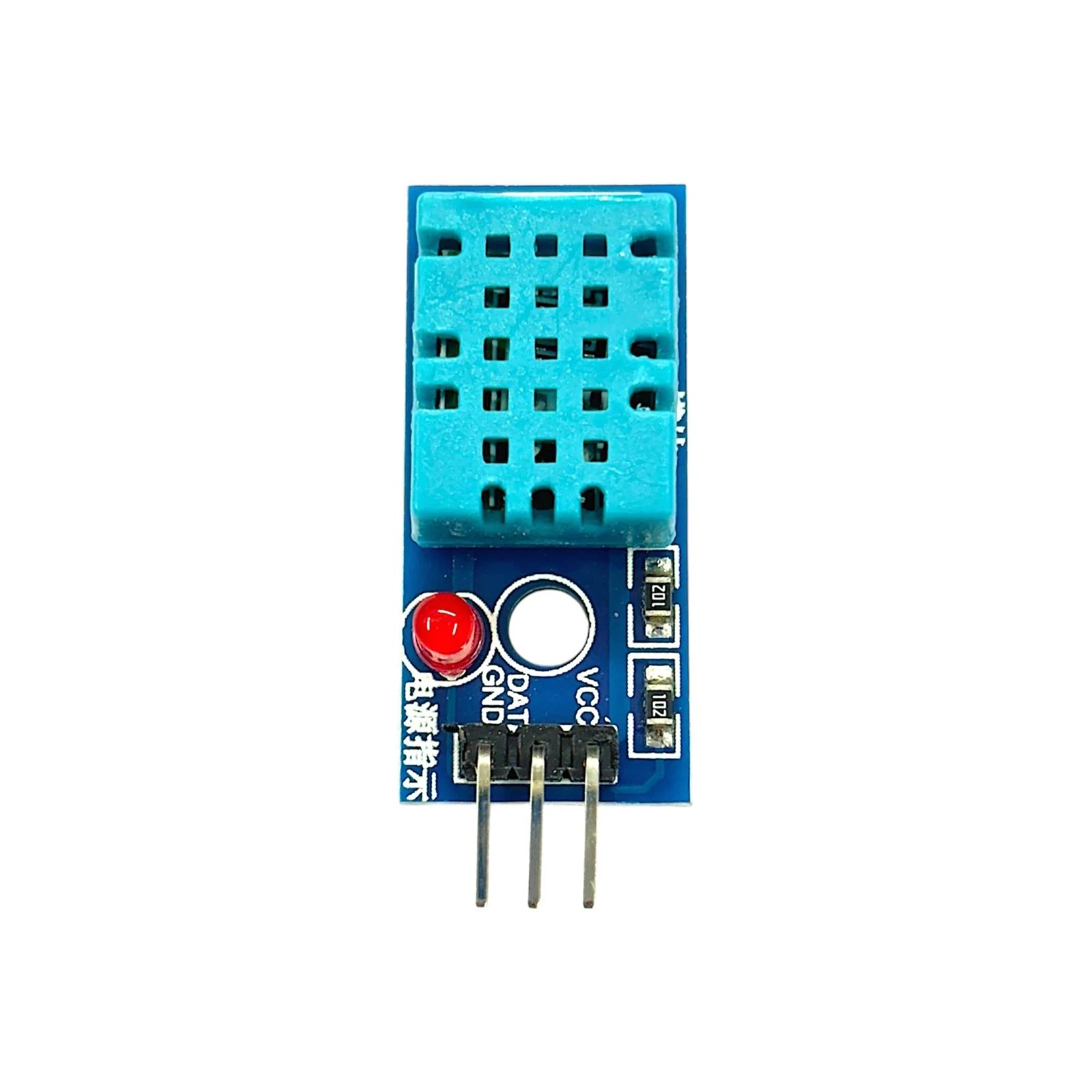Harish Projects
DHT-11 DHT11 Digital Temperature and Relative Humidity Sensor Module
DHT-11 DHT11 Digital Temperature and Relative Humidity Sensor Module
Couldn't load pickup availability
Share
Specifications:
-
Measuring Range:
- Temperature: 0 to 50°C (with an accuracy of ±2°C)
- Humidity: 20% to 80% RH (with an accuracy of ±5% RH)
-
Resolution:
- Temperature: 1°C
- Humidity: 1% RH
-
Operating Voltage: 3.5V to 5.5V (DC)
-
Current Consumption: Low (typically around 2.5mA)
-
Sampling Rate: About 1 sample every 1-2 seconds
-
Size: Approximately 40mm x 20mm x 15mm
-
Communication Protocol: Uses a single-wire, one-wire digital communication protocol (often referred to as a "single bus" system).
The DHT-11 (also known as DHT11 Digital Temperature and Relative Humidity Sensor Module) is a popular sensor used for measuring the temperature and humidity in the air. It is widely used in DIY projects, home automation, and environmental monitoring due to its simplicity and ease of use. Here's an overview of its key features, specifications, and how it works:
Key Features:
-
Digital Output: The DHT-11 sensor provides a digital output signal, which means it communicates directly with microcontrollers (such as Arduino, Raspberry Pi) without needing an analog-to-digital converter (ADC).
-
Low Cost: It is a low-cost sensor, making it ideal for basic projects.
-
Built-in Calibration: The sensor comes pre-calibrated from the manufacturer.
-
Easy to Use: The sensor is easy to interface with microcontrollers, typically using a single data pin for communication.
Working Principle:
The DHT-11 sensor consists of two primary components:
-
Humidity Sensing Element: This element detects the moisture level in the air, generating an electrical signal that corresponds to the relative humidity.
-
Thermistor: This is used to measure the temperature. It adjusts its resistance based on the temperature and sends this data to the microcontroller.
The sensor communicates with the microcontroller through a single data pin. It sends a series of digital pulses that represent temperature and humidity values. The microcontroller reads the pulses, processes them, and converts them into temperature and humidity readings.
How to Interface with Microcontroller (e.g., Arduino):
To use the DHT-11 sensor with a microcontroller like Arduino, you typically follow these steps:
-
Connect the Sensor:
- VCC to 5V (or 3.3V, depending on the board).
- GND to ground.
- Data Pin to a digital I/O pin on the microcontroller (e.g., pin 7 on Arduino).
-
Install the DHT11 Library:
- For Arduino, there is a library called
DHTthat simplifies interfacing with the sensor. You can install this via the Arduino IDE Library Manager.
- For Arduino, there is a library called
-
Code Example:
#include "DHT.h" #define DHTPIN 7 // The pin where the sensor's data pin is connected #define DHTTYPE DHT11 // DHT 11 DHT dht(DHTPIN, DHTTYPE); void setup() { Serial.begin(9600); dht.begin(); } void loop() { delay(2000); // Wait a few seconds between measurements float h = dht.readHumidity(); // Read humidity float t = dht.readTemperature(); // Read temperature in Celsius if (isnan(h) || isnan(t)) { Serial.println("Failed to read from DHT sensor!"); return; } Serial.print("Humidity: "); Serial.print(h); Serial.print("% Temperature: "); Serial.print(t); Serial.println("°C"); } -
Upload and Monitor:
- Upload the code to the Arduino, and open the serial monitor to see the temperature and humidity readings displayed.
Limitations:
- Accuracy: The DHT-11 is not as accurate as other sensors like the DHT-22 (its more expensive counterpart) or other professional-grade sensors. The error margin is relatively high, especially for temperature and humidity readings at extreme ends of the scale.
- Speed: The update rate is quite low, with only one measurement every 1-2 seconds. This might not be suitable for applications requiring real-time data.
- Limited Range: The range of temperature and humidity is narrower than higher-end sensors, making it less suitable for environments with extreme conditions.
Use Cases:
- Home Automation: Measure indoor climate conditions and automate ventilation or heating systems.
- Weather Stations: Collect basic environmental data.
- Humidity Monitoring: Measure humidity in greenhouses, warehouses, or indoor spaces.
In summary, the DHT-11 sensor is a great choice for beginners looking to integrate temperature and humidity sensing into their projects. However, for more precise readings or broader range requirements, the DHT-22 or other more advanced sensors may be a better option.




